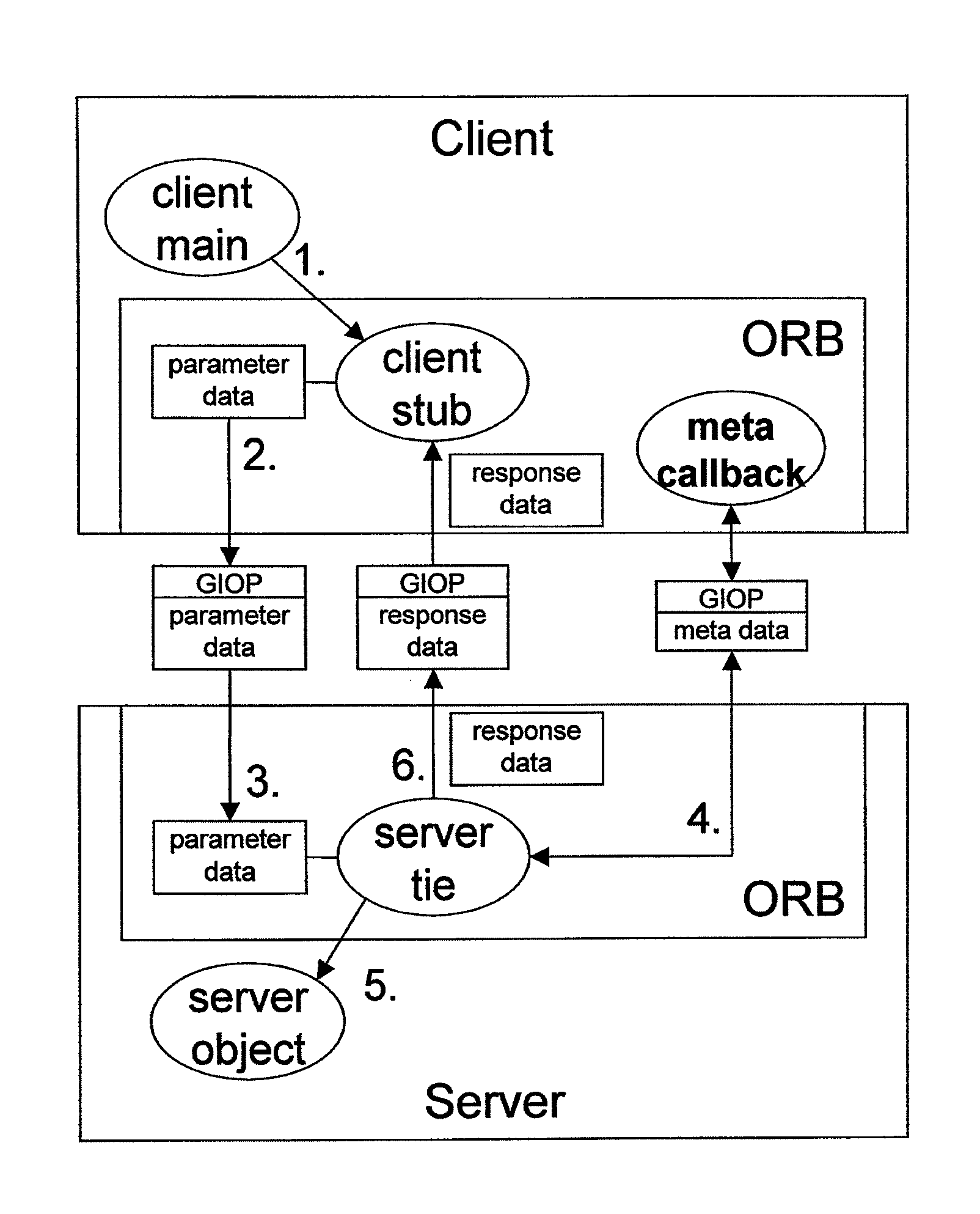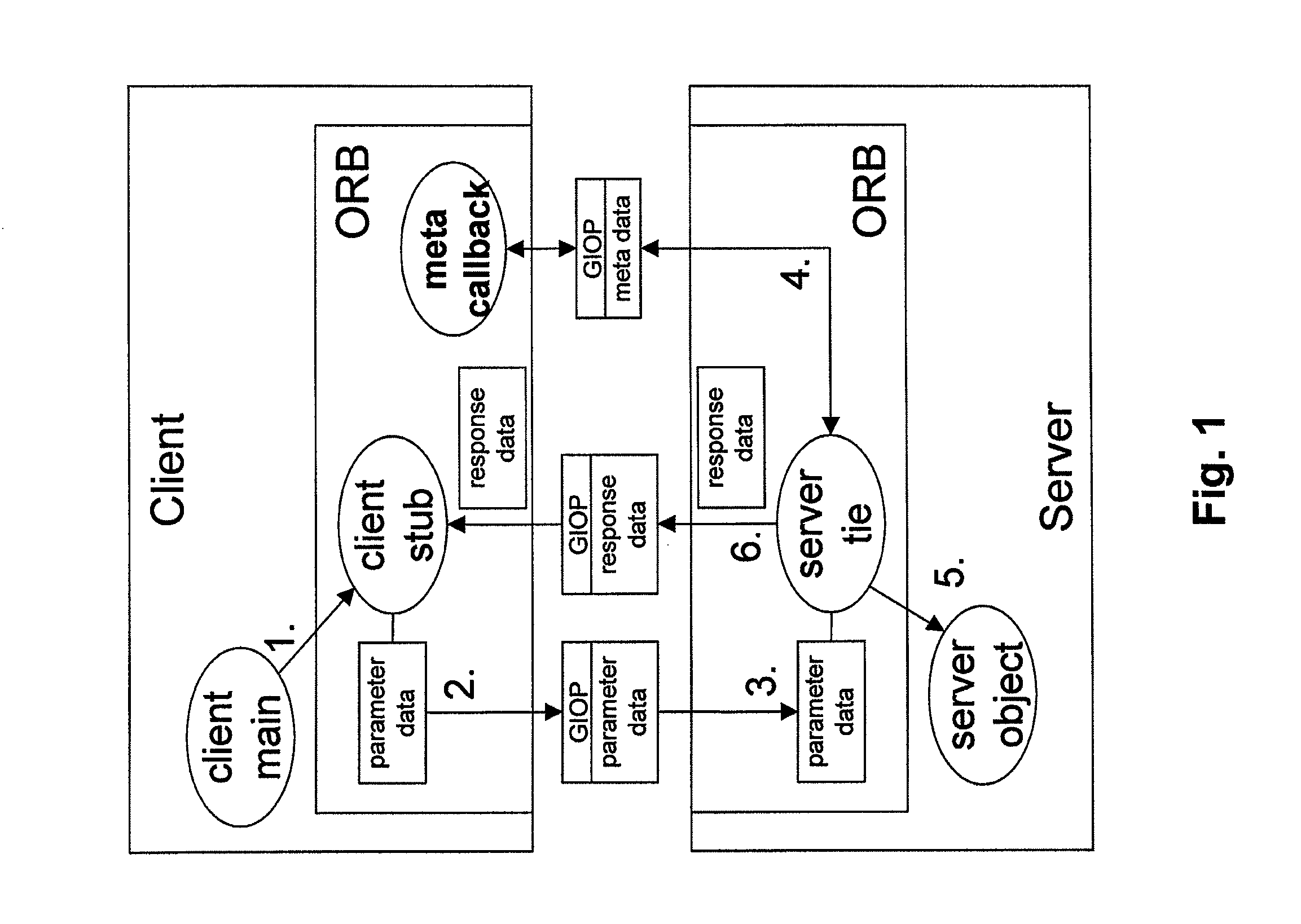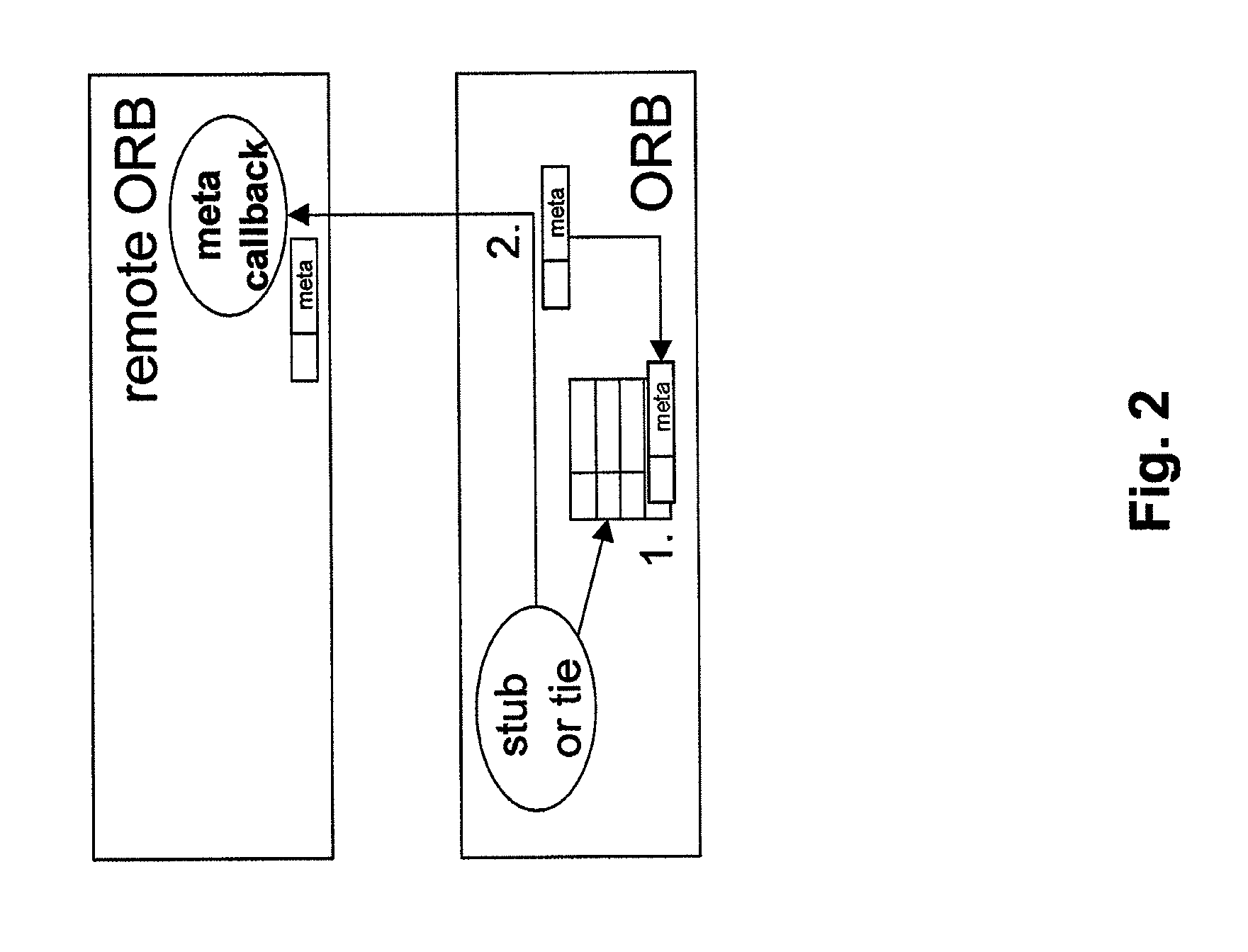Pre-population of meta data cache for resolution of data marshaling issues
a meta data cache and issue resolution technology, applied in the field of pre-population of meta data cache for resolution of data marshaling issues, can solve problems such as migration problems, error likely to be generated, and need additional communications, and cannot always be anticipated in advan
- Summary
- Abstract
- Description
- Claims
- Application Information
AI Technical Summary
Benefits of technology
Problems solved by technology
Method used
Image
Examples
Embodiment Construction
[0013]FIG. 1 illustrates a process for the typical resolution of marshaling errors. An outbound request is made against a client-side stub. The ORB uses marshaling instructions in the client-side stub to serialize parameter data (See step 1 of FIG. 1). The GIOP is a wire-level protocol like FTP or HTTP that describes how data should flow on the wire: what messages look like. It includes the Common Data Representation (CDR), which describes basic formatting for well-known types (integers, longs, etc.), and how to accommodate more complex data types. The ORB marshals serialized parameter data into a well-formed GIOP message and sends the request to the server (See step 2 of FIG. 1). The server-side ORB receives the GIOP message, and retrieves the appropriate “tie” object. The ORB uses instructions in the server-side tie to demarshal the serialized parameter data. In this case, the parameter data cannot be demarshaled based on what the tie knows about the expected parameters—usually be...
PUM
 Login to view more
Login to view more Abstract
Description
Claims
Application Information
 Login to view more
Login to view more - R&D Engineer
- R&D Manager
- IP Professional
- Industry Leading Data Capabilities
- Powerful AI technology
- Patent DNA Extraction
Browse by: Latest US Patents, China's latest patents, Technical Efficacy Thesaurus, Application Domain, Technology Topic.
© 2024 PatSnap. All rights reserved.Legal|Privacy policy|Modern Slavery Act Transparency Statement|Sitemap



